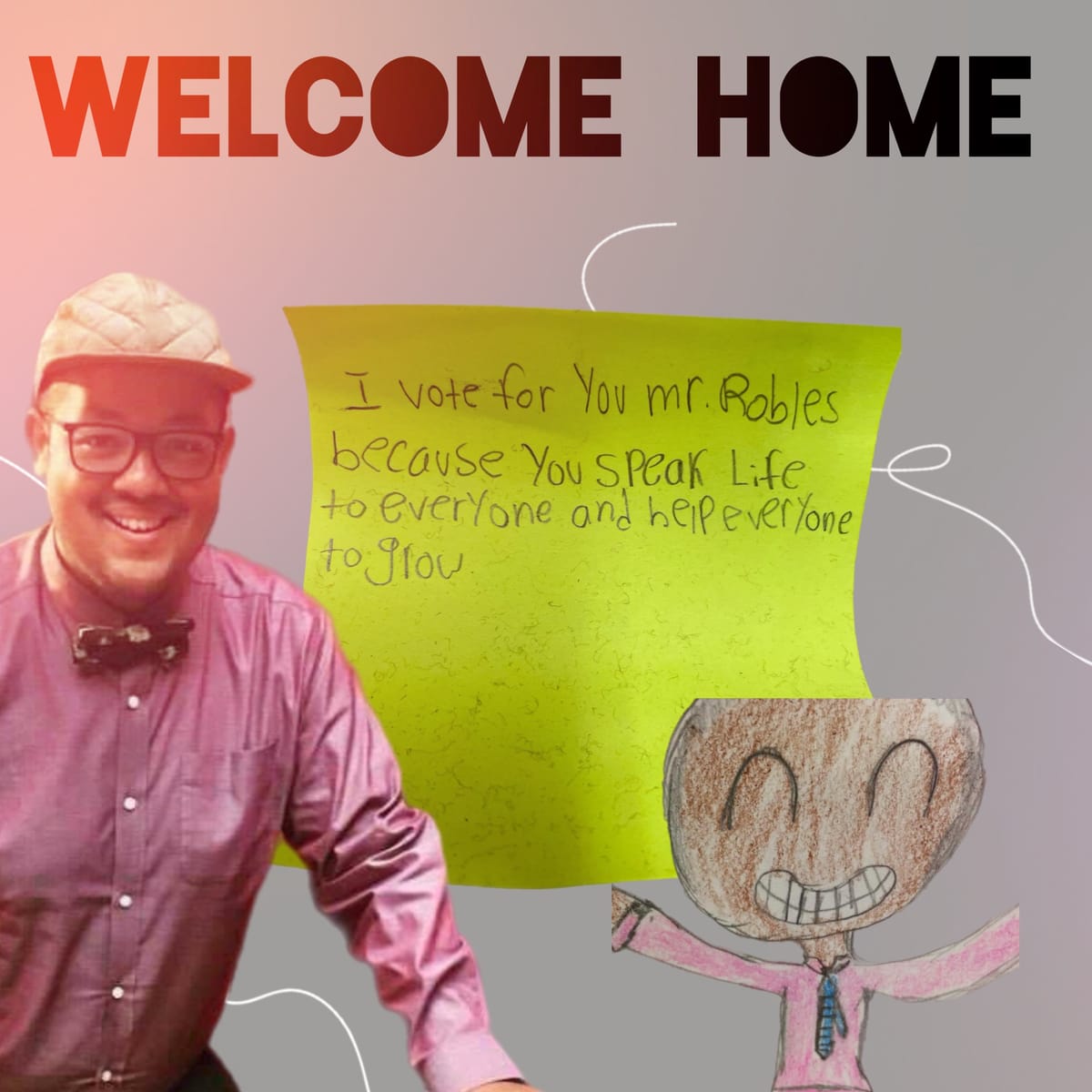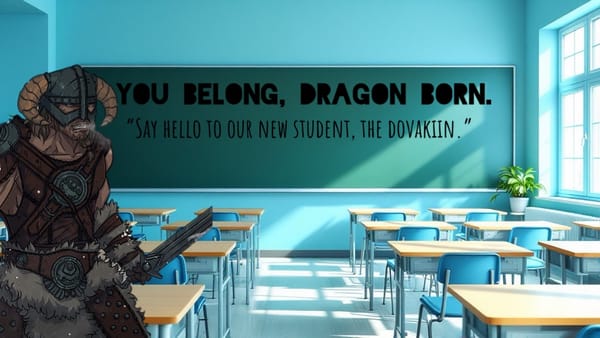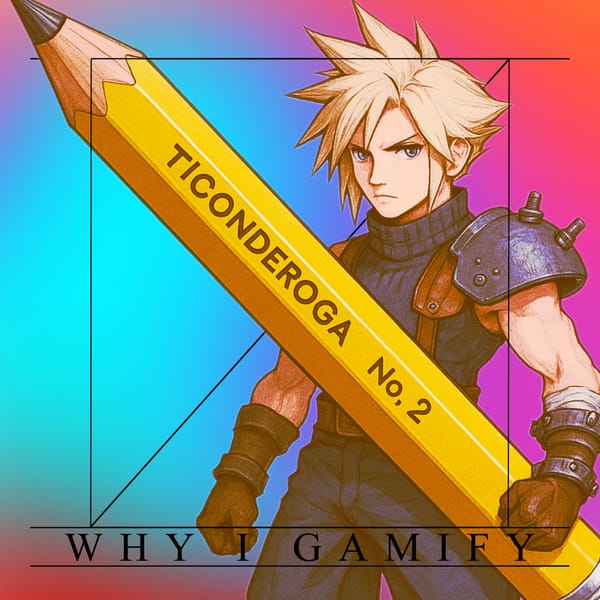Welcome Home
Welcome home, fellow educator! Here you’ll find stories, abolitionist practices, guild rituals, political classroom questions, and small blessings for the road. This is our sanctuary, our commons, our circle. Welcome home, Teacher. You’re not alone.

An Opening Blessing for Every Teacher Who Still Believes in Love
① Opening Vignette
The room was too quiet that morning in June.
You know that hush—the one that settles over a classroom like fog when everyone is trying to breathe around something unspeakable. I stood inside my seventh-grade humanities room, touching the edges of desks that still held the fingerprints of a child we lost. A child who wrote with ferocity. Who laughed like he was unlocking the room. Who argued First Amendment cases in our mock trial with the kind of conviction that made you think the world was still being born.
I lit a small electric candle on the windowsill.
The kids filed in slowly.
We formed a circle.
And together, clumsy, trembling, holy, we said his name.
Grief in a classroom is never abstract. It lives in the empty chair, in the stories half written, in the guild badge still taped inside a notebook. When a student dies by suicide, the world tilts. We are left holding questions too heavy for any one adult to carry.
But teachers respond the only way we know how:
we circle up,
we hold each other,
we keep teaching.
Because love is our curriculum.
Because every child is unrepeatable.
Because our work will always be sacred.
This blog is born from that June morning. From the ache. From the resolve. From the way my students placed their palms on that empty chair as they whispered, “We won’t forget you.”
② The Lesson / Framework
I call this space A Universal Design for Loving because abolitionist teaching begins with the belief that no child or no story should ever be disposable. We teach in a system that is too often quick to punish, slow to listen, and incapable of holding the complexity our kids carry. And still… here we are, showing up with our full chests, our tired feet, our lesson plans smudged with hope.
This blog is a small sanctuary for us.
A political classroom.
A restorative commons.
A guild hall for educators who refuse to surrender tenderness.
Every entry here will follow a rhythm steeped in abolitionist practice and teacher joy:
a vignette, a framework, a practice, and a prophetic closing.
A reminder that our work lives at the intersection of love and liberation.
And yes: we’ll gamify the journey, because joy is a survival strategy. Each article will offer a Guild Touchstone, a classroom ritual, a tarot-badge moment, a CER challenge, or a restorative circle script. These are not gimmicks. They are invitations, or ways to make the classroom a place where kids can practice being human in community.
This blog is also a dedication.
To the child we lost.
To every student carrying storms inside them.
To every teacher who learns to hold both grief and delight in the same worn hands.
Our calling is not to rescue.
Our calling is to refuse disappearance.
③ The Practice / How-To
(An Invitation for Teachers to Join This Journey)
Here’s how to walk through this space with me:
1. Begin with the Circle
Every article will include a Restorative Circle Moment.
Try it with your students.
Or try it with yourself.
Circle Prompt:
“What’s one truth you’re carrying today that deserves a witness?”
2. Claim Your Guild Role
Each piece comes with a teacher guild mechanic—a small power-up to honor the craft.
For this opening post, choose a role for yourself:
- The Hearth-Keeper — Holds warmth in cold seasons
- The Lantern-Bearer — Illuminates the path with inquiry
- The Shield-Singer — Harmonizes conflict with compassion
- The Archivist of Joy — Records the small victories that keep us alive
Whichever role you choose, you’ll gain a +10 XP bonus toward Teacher Resilience, a stat I believe we need to name and cultivate.
3. Political Classroom Question
Each article will pose a question rooted in democratic inquiry.
Today’s:
“What responsibilities do we hold, individually and collectively, when a community member is in pain?”
Use it in class.
Use it in staff meetings.
Use it in your own heart.
4. A CER Mini-Task
Claim: Teachers are community guardians.
Evidence: (Choose one)
- The daily emotional labor we perform
- The trust students place in our presence
- The resilience built when classrooms carry grief together
Reasoning: Explain why this makes teaching political, relational, and abolitionist at its core.
5. Blessing for the Child We Lost
“Mikey Bayless, your story is written into us. Your light remains. We carry you forward with tenderness and ferocity.”
④ A Warm, Prophetic Closing
Beloved teacher, if you are reading this:
Thank you.
Thank you for rising when the world feels too hot.
Thank you for showing up, not because the system honors your courage, but because children deserve adults who honor their becoming.
Thank you for refusing to numb your heart.
Thank you for the quiet acts of care no one sees: the whispered check-ins, the improvised circle scripts, the way you soften your voice when a child’s world is breaking.
This space, this blog, is my letter of gratitude to you.
My offering.
My way of saying: Welcome home.
You are not alone in this work.
You never have been.
We are still the noble profession.
May every post here lift your spirit, sharpen your practice, and remind you why love is still the most radical pedagogy we possess.
And may the memory of the student we lost guide our commitment to stand in the gap for every young person who enters our classrooms, especially the ones carrying invisible battles.
Because every child deserves a classroom designed for loving.




